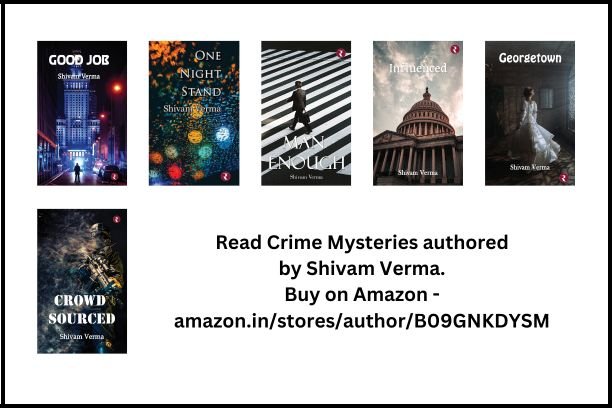
When It Occurs
Annually Eighth Day of Dark Fortnight in Hindu Month Bhadrapada
Timeline
Days Passed (768)
# Hashtags
#Janmashtami #LordKrishna
Janmashtami, a Hindu festival, honors the birth of the deity Krishna and is alternatively referred to as Shri Krishna Janmashtami and Gokulashtami. This celebration occurs on the eighth day of the dark fortnight in the Hindu month of Bhadrapada, typically falling in August–September. The festivities span two days. Krishna, recognized as the eighth avatar of Vishnu, is elevated in certain Hindu scriptures as the supreme God and the origin of all avatars.
Significance of Janmashtami
Janmashtami celebrates the birth of Lord Krishna, the eighth avatar of Lord Vishnu, who is believed to have been born over 5,000 years ago in the city of Mathura, India. According to Hindu scriptures, Krishna was born to restore dharma (righteousness) and to protect humanity from evil forces. His life and teachings, especially those found in the Bhagavad Gita, hold immense spiritual importance for Hindus around the world.
In the UK, Janmashtami has a dual significance: it serves not only as a religious celebration but also as a means for the Hindu diaspora to connect with their heritage, maintain cultural traditions, and share the story of Lord Krishna with younger generations.
Janmashtami Celebrations in the UK
Janmashtami is celebrated in various ways across the United Kingdom, with a combination of religious observances, cultural performances, and community gatherings. The largest celebrations typically take place in areas with significant Hindu populations, such as London, Leicester, and Birmingham, but smaller observances are held in Hindu temples and community centres nationwide.
1. Puja and Aarti (Worship Rituals)
Devotees begin the day with special prayers and pujas (worship rituals) dedicated to Lord Krishna. Temples are decorated with flowers, lights, and images of Krishna, and the deity’s idols are dressed in new clothes and adorned with jewellery. Devotees offer fruits, sweets, and other food items as part of the ritual, which are later distributed as prasad (blessed food). The midnight hour, which is believed to be the time of Krishna’s birth, is considered the most auspicious, and many temples hold special midnight aartis (rituals involving songs and lights) to welcome the newborn Lord.
2. Bhajans and Kirtans (Devotional Music)
Music plays a central role in Janmashtami celebrations. Devotional songs, known as bhajans, and group chanting sessions, called kirtans, are performed in temples and homes. These songs recount the life and divine acts (leelas) of Lord Krishna, such as his mischievous childhood pranks, his youthful romances with Radha, and his role as a charioteer in the Mahabharata. The singing of bhajans creates a joyful and devotional atmosphere, drawing the community together in praise of Krishna.
3. Dahi Handi (Pot Breaking Ceremony)
One of the most vibrant aspects of Janmashtami, especially in the UK’s Hindu communities, is the Dahi Handi ceremony. This event is inspired by the childhood pastime of Krishna, who would form human pyramids with his friends to steal butter or curd stored in pots hung high above the ground. During the celebration, a pot filled with curd, butter, or sweets is suspended from a height, and young men and boys form human pyramids to reach and break the pot. This event symbolizes Krishna’s playful nature and his love for butter. Though not as common as in India, Dahi Handi events are occasionally organized in larger cities such as Leicester and London, attracting crowds and participants.
4. Fasting and Feasting
Fasting is an important aspect of Janmashtami observance. Many devotees fast during the day, consuming only fruits, water, and milk, and break their fast at midnight, the time of Krishna’s birth. Special vegetarian dishes are prepared in Krishna’s honor, often including sweets like ladoos, kheer (a rice pudding), and makhan mishri (butter and sugar). Feasting is a communal activity, with many families preparing elaborate meals and sharing them with neighbors and friends.
5. Dramatic Performances: Raslila and Krishna Leela
In several cities, dramatic reenactments of Lord Krishna’s life, known as Raslila or Krishna Leela, are performed. These plays and dance dramas depict important episodes from Krishna’s life, such as his childhood, his playful interactions with the gopis (cowherd maidens), and his heroic deeds. Local artists, as well as children, often participate in these performances, dressed in traditional costumes. The Raslila performances are particularly popular in temples and cultural centers in London and Leicester.
6. Decorating Baby Krishna
A special tradition involves the decoration of a cradle with an idol of the baby Krishna. This symbolic cradle is placed in temples or in homes, and devotees take turns rocking the cradle while singing lullabies to celebrate the divine birth. This is an expression of love and devotion, celebrating Krishna as a beloved child.
Major Venues for Janmashtami Celebrations
The scale of Janmashtami celebrations in the UK varies from small family gatherings to large public events. Some of the prominent venues include:
-
Shree Swaminarayan Temple, London: Located in Neasden, this temple hosts one of the largest Janmashtami celebrations in the UK. Thousands of devotees gather for prayer services, bhajans, and a grand aarti ceremony at midnight. The temple is also known for its vibrant Raslila performances.
-
ISKCON Temple, London: The International Society for Krishna Consciousness (ISKCON), also known as the Hare Krishna movement, celebrates Janmashtami with great fervor. The temple in Soho, London, organizes devotional singing, kirtans, and feasts, attracting both devotees and tourists. ISKCON temples across the UK, including in Leicester and Birmingham, also host Janmashtami events.
-
Leicester’s Belgrave Road: Leicester is home to a large Hindu community, and Janmashtami celebrations here are grand and inclusive. Temples in the area, such as the BAPS Shri Swaminarayan Mandir, hold day-long services, and large public events are often organized to mark the occasion.
Janmashtami’s Cultural Impact in the UK
In addition to its religious significance, Janmashtami has a strong cultural and social impact on the Hindu community in the UK. It provides a sense of connection to Indian roots and an opportunity to pass on cultural and religious traditions to younger generations. The festival is also a time for community bonding, with families, friends, and neighbors coming together for prayer, feasting, and celebration.
Moreover, Janmashtami celebrations in the UK often attract interest from non-Hindus, who are curious about Hindu culture and traditions. Many temples and organizations open their doors to the public during the festival, offering tours, talks, and cultural performances that help promote understanding and diversity.
Conclusion
Janmashtami is a vibrant and spiritually significant festival in the UK, celebrated with devotion, music, dance, and community spirit. It brings the Hindu diaspora together in a joyful celebration of Lord Krishna’s birth while preserving cultural heritage. Whether through elaborate temple rituals, dramatic performances, or family gatherings, the festival continues to grow in importance as a key religious and cultural event in the UK’s Hindu calendar.


